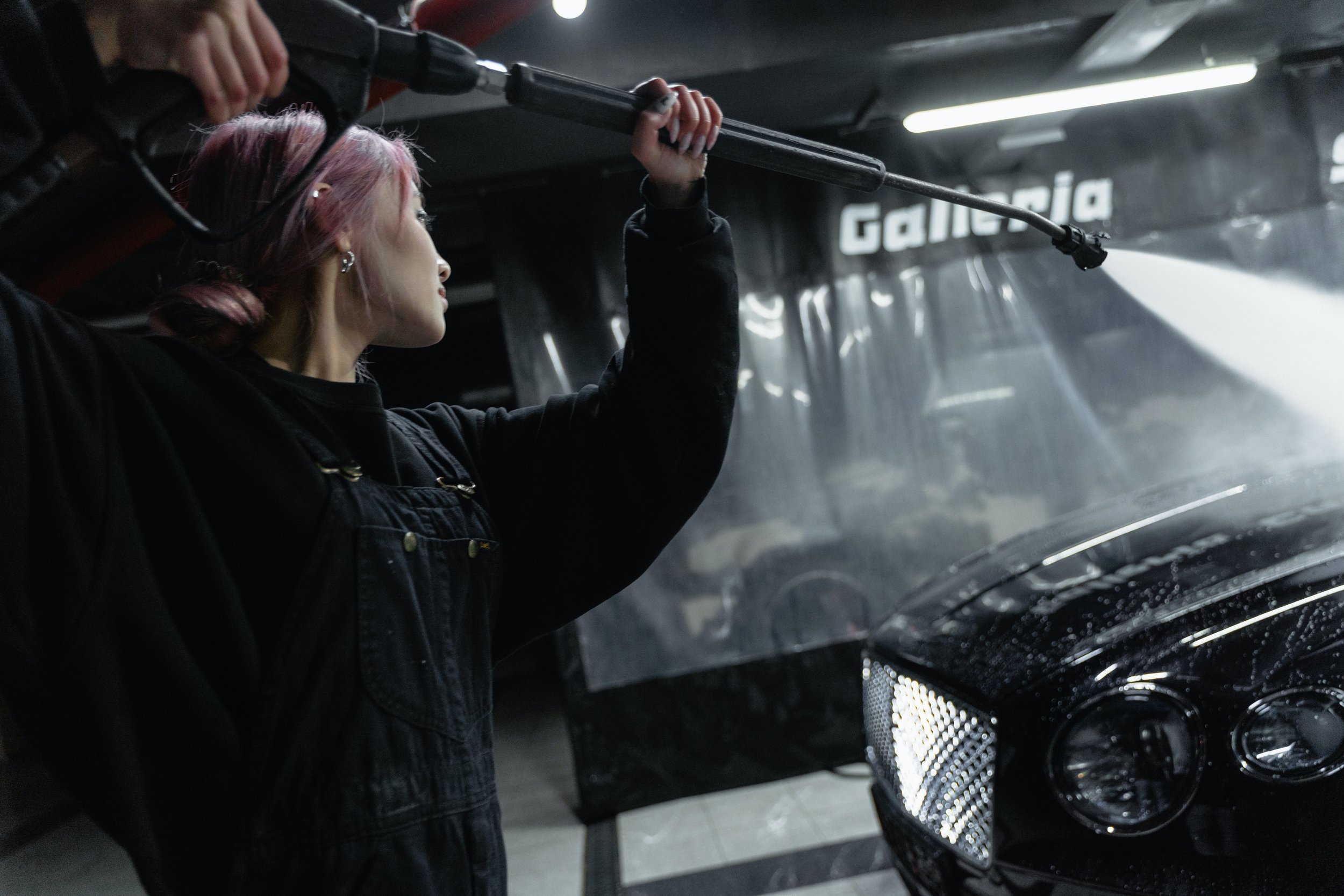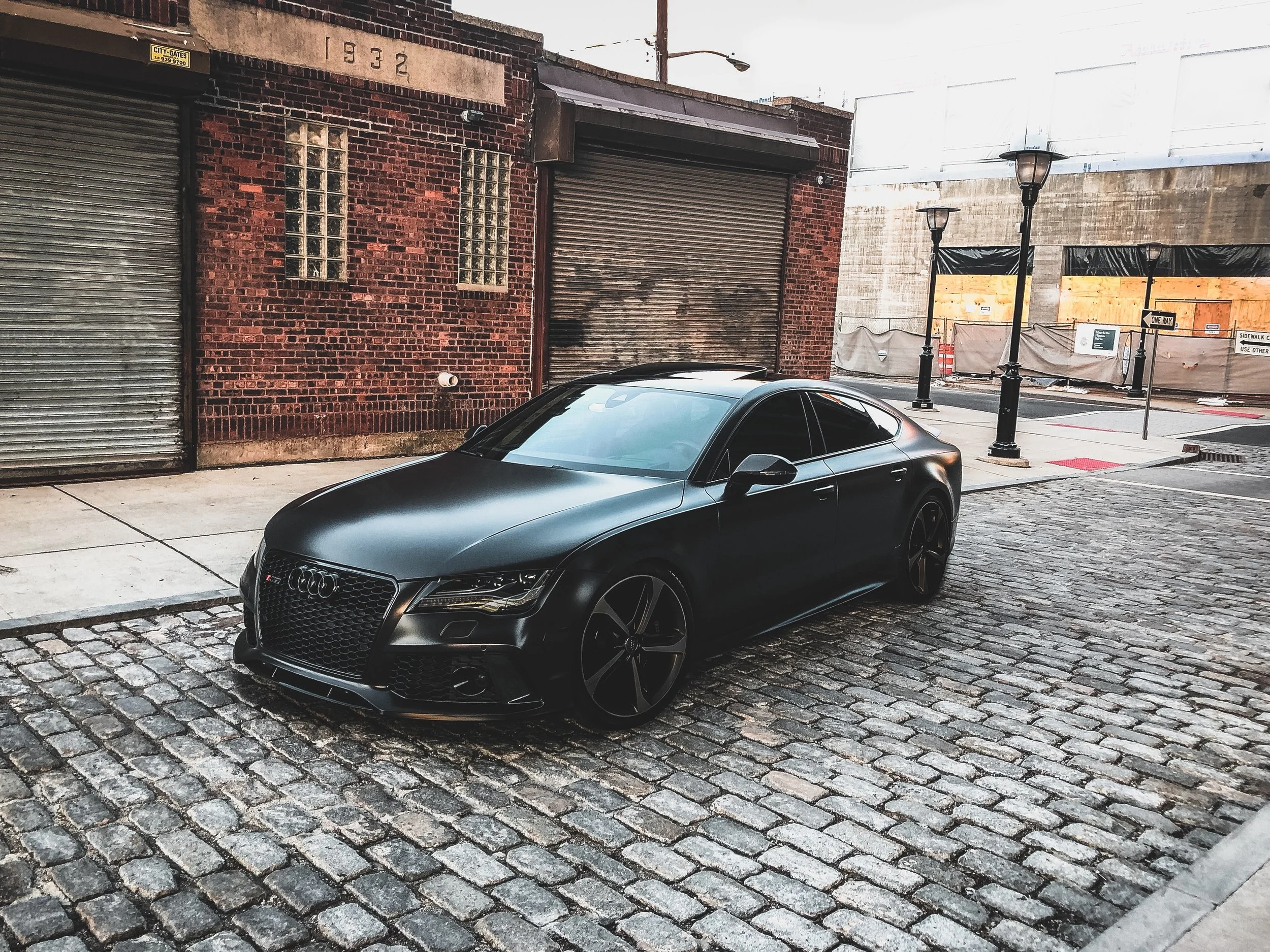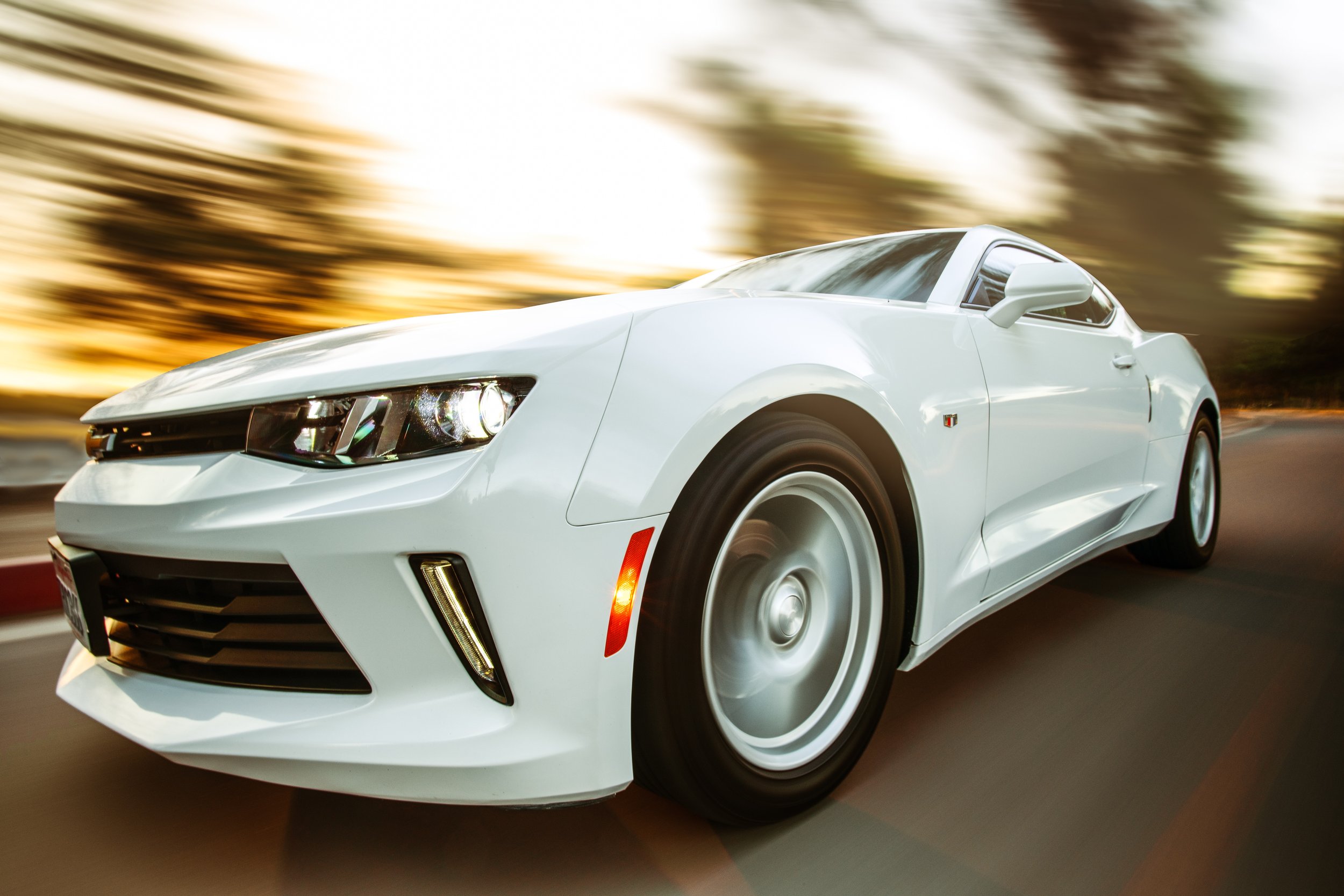
Paint Correction
Paint correction is the process of removing clearcoat defects such as swirl marks, oxidation, minor scratches, water spots, etching, and moderate scratches from the clearcoat. With the use of pneumatic and electric rotary or dual action polishers combined with an abrasive compound or polish the clearcoat is abraded down to remove or minimize the appearance of paint defects. Paint correction can range in aggressiveness from single step polishing to multi stage compounding and polishing. In some cases where severe clearcoat defects are present the use of wet sanding may be required.
Modern clearcoats are extremely thin and the amount of clearcoat removed during the paint correction process is an important factor in determining what correction process to choose. Prior to any corrective process measurements will be taken of the clearcoat thickness to determine what level of correction can safely be achieved. In most cases a single step correction process can bring most vehicles back to looking like new. For most customers it is not worth the significant increase in cost and amount of clearcoat removed to achieve a flawless finish in addition to the time required to maintain that type of finish. For some vehicles with severe defects and aged clearcoat, more aggressive level of paint correction may not be possible.
The paint correction process consists of the exterior detailing process as well as using a combination of clay bar, clay towel, and clay disc to lightly abrade the clearcoat to remove any bonded contaminates. The vehicle is also treated with an iron removing solution to get the paint as clean as possible prior to applying any abrasive compounds. The paint correction process can take anywhere from a few hours to several days depending on the level of correction required.





